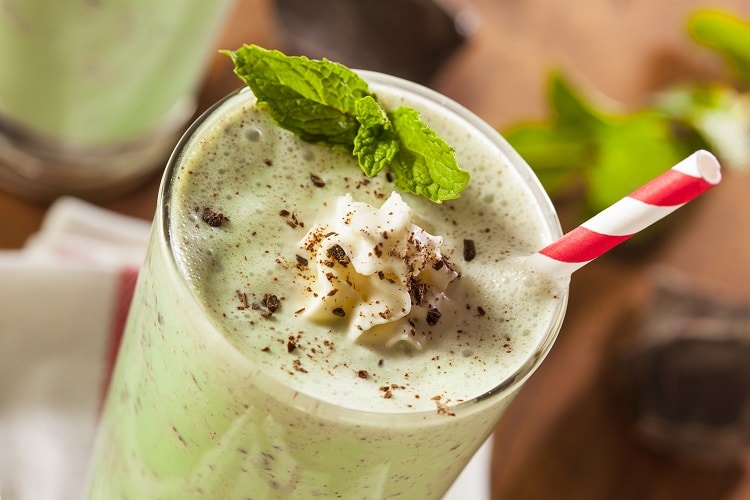It comes as no surprise that herbs and spices have been used as food additives for centuries. They add significant colors, flavors and aromas to the foods we commonly eat, but the benefits don’t just stop at the senses – they have a host of health benefits all while containing very small amounts of calories! Herbs and spices are a great way to add flavor without fat, salt or sugar. They can also make it easier to stick to a weight-loss or specialty diet, such as those constructed for hypertension or heart disease.
What Makes Them So Great?
Herbs and spices contain a wide variety of phytochemicals, including flavonoids, lignans, polyphenolics, carotenoids, saponins and plant sterols (see Big Word Index for descriptions of each). These chemicals act as powerful antioxidants in the body by attaching to disease-causing free radicals and neutralizing them so they cannot exert their detrimental affects.
Because herbs and spices no longer contain the water that makes up a large part of their origin (fruits and veggies), they offer a compact source of antioxidants per unit of weight. For example:
-
Just 1 teaspoon of cinnamon has about the same amount of antioxidants as 1/2 cup of blueberries or 1 cup of pomegranate juice.
-
One teaspoon of ginger, oregano, thyme or turmeric have as many antioxidants as 1 cup of spinach, 1/2 cup of chopped asparagus, 1/2 cup of chopped tomatoes and 1/2 cup of red grapes, respectively.
Keep in mind that these herbs and spices should be in addition to and not in place of fruits and vegetables because they don’t contain the same beneficial amounts of fiber or water.
Herbs and spices are also being investigated for their possible role in increasing satiety, metabolic rate, weight management and anti-inflammatory effects. As you will read later (and in the Big Word Index), most herbs or spices are unique in their health-promoting properties. So, just as variety is recommended for a healthy diet of whole foods, it is also recommended for herbs and spices.
Check out the listing below for unique health-promoting benefits of popular herbs and spices and suggestions on how to incorporate them in your daily meals.
Cinnamon
A quarter teaspoon of cinnamon per day has been shown to significantly lower blood glucose, triglyceride and cholesterol levels. A 2000 United States Department of Agriculture study reported cinnamon as the most effective out of 49 herbs, spices and medicinal plants evaluated for glucose-lowering components. Adding cinnamon to a meal may significantly delay gastric emptying, which could help keep blood glucose levels more stable.
Every Day Use: Add a dash to salads, fruits, vegetables, breads, and snacks, like yogurt. or cereal
Note: Ground cinnamon should not be added to boiling liquids, as the liquid may become stringy and the cinnamon will lose flavor.
Basil
It is believed that basil aids digestion, eases stomach cramps, has a slightly sedative effect thus decreasing anxiety and acts as a memory enhancer. These effects are yet to be scientifically confirmed, but what have been confirmed are basil’s antibacterial components. Before refrigeration, basil was used to help preserve food in addition to adding flavor. It can even be topically used on wounds as an antibacterial to aid healing!
Every Day Use: Add crushed or whole leaves to soups, salads, vegetables, fish, meats and pastas.
Ginger
Evidence shows that ginger and its derivatives may be effective herbal supplements for the clinical treatment of E. Coli-induced diarrhea. Although not a major U.S. issue, diarrhea is the leading cause of infant death in developing countries. Evidence also supports ginger as an anti-inflammatory and has even shown modest improvement as a method of relieving arthritic knee pain (though its efficacy is still ranked below that of ibuprofin). Last but not least, ginger has been used to prevent motion sickness and postoperative nausea.
Every Day Use: Add to soups, salads, vegetables and meats.
Rosemary
Rosemary has been traditionally used to enhance memory and relieve minor headaches and other body aches. A 2007 study reported that the active ingredient in rosemary, carnosic acid, may protect the brain from free radical damage that could lead to strokes or other brain degenerating diseases, such as Alzheimer’s.
Every Day Use: Enhance lighter fish dishes, tomato sauces and vegetables; melt butter with rosemary to dress freshly steamed red potatoes and peas or a stir-fried mixture of zucchini and summer squash; crush leaves by hand or with a mortar and pestle before using.
Thyme
Along with rosemary, thyme provides substantial amounts of flavonoids which extend the activity of vitamin C, act as antioxidants and act as anti-inflammatory and anti-tumor agents. Studies comparing flavonoid consumption have demonstrated that subjects who consumed the highest amounts had 60% lower mortality from heart disease and a 70% lower risk of stroke than those who consumed low amounts.
Every Day Use: Rub minced garlic and thyme over lamb, pork or beef roasts; cheese, tomato and egg dishes taste great with thyme; blend fragrant thyme into poultry stuffing, spaghetti or pizza sauce.
Turmeric
Turmeric is most notable for its antioxidant, anticancer, blood-sugar regulating (similar to cinnamon) and anti-inflammatory properties. Turmeric has recently garnered attention for its possible role in lowering cholesterol. Unfortunately there aren’t many studies done that look at this cholesterol-lowering effect in humans, so that role can only be speculative at this point.
Every Day Use: Adds a unique flavor to curries, rice and chicken dishes; turmeric is a classic addition to chutneys, pickles and relishes.
Garlic
Onions, garlic, chives and leeks all contain allicin, a chemical that is antibacterial, antifungal and inhibits the growth of yeast. Because of this property, raw (cooked is not as effective because heat destroys allicin) garlic has been used to treat illnesses like colds and flu. Eating a clove of garlic a day over a period of time is proven to significantly reduce cholesterol levels.
Every Day Use: Toss into pasta sauces, stews and soups, salad dressings and marinades.
Flax
Aside from providing a potent dose of heart-healthy omega 3 fatty acids, flaxseed may also lower both total and LDL cholesterol concentrations without significantly changing HDL (good) concentrations.
Every Day Use: Add flaxseed oil to yogurt, cereal and salad dressing.
Note: If flax is to be consumed for uses other than a source of fiber it should be bought in the oil form. Most health-promoting compounds are found in the seed itself, so it would take a lot of chewing to grind them up enough make these compounds digestible.
Final Important Note: If you are taking any medications check with your doctor or licensed dietician before adding any new herbs or spices to your eating patterns. Many herbs and spices have potential interactions with certain medications (eg, flaxseed naturally contains phytoestrogens [plant forms of estrogen that mimic the effects of estrogen in the body], so individuals with a history of breast cancer or those on anti-estrogen drugs should probably avoid flax.
Resources
-
Cohen, E. Herbs and spices have surprising health benefits. Pressconnects.com [Internet]. 25 July 2008. Available fat: http://altmedicine.about.com/od/cinnamon/a/cinnamon.htm.
-
Chen JC, Huang LJ, Wu SL, Kuo SC, Ho TY, Hsiang CY. Ginger and its bioactive component inhibit enterotoxigenic Escherichia coli heat-labile enterotoxin-induced diarrhea in mice. J Agric Food Chem. 2007;17;55(21):8390-8397. Epub 2007 Sep 20.
-
Craig WJ. Health-promoting properties of common herbs. Am J Clin Nutr. 1999;70(3 Suppl):491S-499S.
-
Culinary Café [Internet]. Spice & Herb Encyclopedia. [cited 2008 July 14]. Available at: http://www.culinarycafe.com/Spices_Herbs/index.html.
-
Phytochemicals [Internet]. Belgium. Top Cultures. [cited 2008 July 14]. Available from: http://www.phytochemicals.info/phytochemicals.php
-
Tapsell LC, Hemphill I, Cobiac L, et al. Health benefits of herbs and spices: the past, the present, the future. Med J Aust. 2006;185(4 Suppl):S4-24.
-
Wong C. Health Benefits of Cinnamon. About.com Alternative Medicine [Internet]. [modified 2007 Oct 27; cited 2008 July 14]. Available from: http://www.pressconnects.com/apps/pbcs.dll/article?AID=/20080625/LIFESTYLE07/806250311
Big Word Index
Phytochemicals:
A general classification of plant- or fruit-derived chemical compounds that have anti-cancer, anti-inflammatory and antioxidant properties.
Flavonoids:
Specific phytochemicals that have many functions, including production of red and blue pigmentation in plants and flowers. They are known for their potent antioxidant, anti-inflammatory, anti-cancer and anti-microbial properties.
Lignans:
Phytochemicals found particularly in flax seed that act as antioxidants. Lignans are also one of the major classes of phytoestrogens (plant compounds that act similarly to estrogen).
Polyphenols:
Phytochemicals in plants that are found in a variety of foods, especially in fruit skins; other good sources are berries, tea, beer, grapes/wine, olive oil, chocolate/cocoa, walnuts, peanuts and pomegranates. Most are noted for their antioxidant activity.
Carotenoids:
Pigments that are naturally occurring in plants, such as beta-carotene, which is the precursor to Vitamin A. Carotenoids also act as antioxidants.
Saponins:
Phytochemicals that have effects ranging from cholesterol reduction, reduced cancer risk, reduced bone loss, immunity boosting capabilities and antioxidant activity. There are many different saponins that each possesses their own distinct benefits. Saponins specifically found in beans interfere with the replication of cell DNA, thereby preventing the multiplication of cancer cells. Capsaicin, found in hot peppers, protects DNA from carcinogens.
Plant Sterols:
Also referred to as phytosterols, these are an essential component of plant membranes and resemble the structure of animal cholesterol. In the body they are purported to lower blood cholesterol by binding and excreting it much like the action of dietary fiber.
Satiety:
The sense of feeling full after a meal.
Gastric Emptying:
The rate at which food passes through the stomach.



